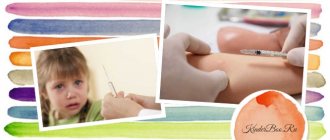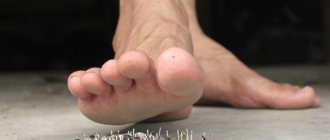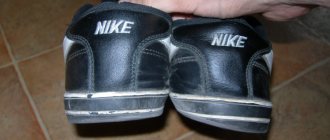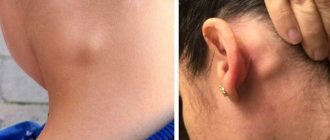One of the most common childhood diseases is stomatitis: according to statistics, more than 80% of parents experience it.
This is not as harmless a disease as it may seem, because if the disease is ignored and left untreated, the infection can lead to complications that will require much more time and effort to combat. Therefore, it is extremely important to know what childhood stomatitis looks like, as well as how to treat it.
Causes of stomatitis in a child
In childhood stomatitis, the mucous membrane of the oral cavity is affected: small pimples of white or yellowish color, filled with liquid, appear on its surface. In some cases, ulcers form.
Stomatitis is predominantly a childhood disease, although it can also occur in adults. The rash affects the inner surface of the cheeks, tongue and gums. The disease causes a lot of inconvenience: pimples hurt and itch, their appearance is accompanied by a burning sensation in the mouth.
Among the main reasons for the development of stomatitis are:
- poor oral hygiene;
- injury to the mucous membrane;
- diseases of the gastrointestinal tract;
- oral burn;
- pathogenic bacteria that enter the oral cavity from dirty hands, toys, etc.
Causes
The following reasons can provoke the appearance of ulcers in the mouth of a child:
- Aphthous stomatitis is an inflammatory pathology, which is characterized by the appearance of gray-white ulcers. The reason for the development of such a disease can be a decrease in the body’s defenses, disruptions in the endocrine system, vitamin deficiency, infections and wearing braces.
- Ulcerative stomatitis most often develops as a result of untreated or neglected stomatitis, which does not cause the appearance of pronounced symptoms and therefore often goes unattended. Ulcerative stomatitis, on the contrary, causes severe discomfort to the patient and is accompanied by bleeding gums, a rise in body temperature and enlarged lymph nodes.
- Dental defects and malocclusion provoke the appearance of ulcers in the child’s mouth. With such pathologies, the mucous membrane is severely injured and becomes too vulnerable to penetration by pathogenic microorganisms.
Symptoms of the disease
Before treatment can begin, the disease must be recognized. Stomatitis has a number of symptoms, thanks to which the disease cannot be confused with any other. These include:
- the appearance of swelling of the mucous membrane;
- formation of yellow or white plaque on the mucous membrane;
- enlarged lymph nodes, accompanied by an increase in body temperature;
- constant formation of saliva in large quantities (sometimes, on the contrary, stomatitis is accompanied by increased dryness);
- bad breath.
The photo gives a clear understanding of what stomatitis looks like.
These are general symptoms, but they may have their own characteristics depending on the type of disease:
- allergic stomatitis is accompanied by the formation of ulcers on the palate, tongue, inner cheeks, and gums;
- aphthous stomatitis is characterized by the formation of larger yellow spots, up to 1 cm in diameter, with inflamed edges;
- Herpetic stomatitis can be distinguished by the abundance of small fluid-filled rashes that combine into one large wound. In addition, herpes can cause a general deterioration in health - high fever, weakness and body aches;
- with candidal stomatitis, a white coating appears on the inner surface of the cheeks and tongue. The cause of candidiasis is poor hygiene or a consequence of antibacterial therapy.
Regardless of what kind of stomatitis the child has, treatment should be prescribed immediately after the first signs of the disease are detected: delay is fraught with aggravation of the situation, which will lead to an increase in healing time. How to treat stomatitis in children in the mouth will depend on the form of the disease and the reasons for its development: treatment methods in each case will be unique.
Treatment of stomatitis in infants
the article on how to treat stomatitis in infants with a warning. Many young parents rely more on their grandmother's and mother's advice, which, they say, has always helped - and will help now. We don’t argue - folk remedies are effective and often with their help you can easily get rid of inflammation in the baby’s mouth, including thrush, which occurs in a mild form.
Treatment of stomatitis
Many doctors recommend rinsing with chamomile, but this must be done very carefully, placing the baby on its side so that it does not choke. Although most folk methods - rinsing with decoctions of sage, St. John's wort, cabbage juice, etc., are not very suitable for a newborn who, in addition to mother's milk, does not even receive complementary foods yet. In addition, some methods are categorically unacceptable for children, for example, in no case should you burn sores with brilliant green or peroxide. Firstly, it is very painful (try it for yourself), and, secondly, burns are obtained on the baby’s delicate mucous membrane, which are very difficult to heal.
We also consider it contraindicated to lubricate erosions with honey, because a sweet nutrient medium, on the contrary, promotes even greater development of bacteria and fungi. Moreover, there is no need to shove a mixture of yogurt with garlic or aloe juice into your baby’s mouth. Self-treatment can lead to the opposite results - the disease will develop and enter a difficult-to-treat stage. Parents often ask the question: which doctor treats stomatitis ? Thrush and other mild forms of stomatitis are treated by pediatricians; more complex cases should be addressed to pediatric dentists.
How to treat stomatitis in children under one year of age?
In general, the treatment of stomatitis, like all other diseases of the mouth, is the prerogative of dentists. After all, treatment depends on the type of stomatitis and the causes of its occurrence. And only a doctor can assess the severity of the disease and the necessary list of medications and manipulations. To carry out treatment, the child should be isolated from other children, since stomatitis is a contagious disease. You should strictly adhere to cleanliness, feed the baby only warm and liquid food, and give plenty of unsweetened drinks. Before feeding, you should wash your breasts well with warm water (without soap or alcohol solutions!). Treatment of stomatitis in infants and older children has a number of differences, because you cannot force a baby to rinse his mouth, he will not talk about his feelings. When the baby has eaten, you need to put him on his side and rinse his mouth with a special irrigation bottle, pouring the solution (chamomile, pimafucin) behind his cheek and collecting it with a diaper. After this, the mouth is lubricated with special ointments, which are prescribed by the doctor depending on the type of stomatitis - antifungal, antiviral or, in the case of traumatic stomatitis, a solution of vitamin A in oil or Shostakovsky balm.
To treat thrush, a Candide solution is used, which destroys the fungus. The duration of use of the drug is strictly 10 days; you cannot stop treatment, even if there is no longer visible thrush, since the fungus may not be completely eliminated, and if it returns, it will be resistant to the drug and difficult to cure. For candidiasis, it is also recommended to lubricate the mouth with a solution of soda (or boric acid) to change the pH, which kills the fungus. Under no circumstances should you use drugs prescribed for older children for infants! Dosages for children are completely different, in addition, there may be intoxication of the body, because the functions of the liver and kidneys are still in their infancy. For infants, lubrication with aniline dyes (methylene blue) is also not used. The doctor may prescribe lubrication of the mucous membrane with 1% clotrimazole or 5% nystatin ointment.
How to treat viral stomatitis?
How to treat stomatitis in an infant if it is of viral origin? Herpetic stomatitis in infants requires a more responsible attitude. In acute cases of the disease, treatment is only in a hospital. The main reason is that acute viral stomatitis occurs against the background of a sharp increase in temperature to 40°, which often causes convulsions and can cause respiratory arrest.
In case of a mild form of herpes (and aphthous stomatitis, which is more rare in infants), a course of acyclovir (in the form of an ointment), vitamins and immunostimulants is given, but only on an individual prescription from a doctor. In addition to antiseptic rinses using chamomile decoctions, for children over 8 months old, you can use a decoction of sage, pimafucin, keratoplasty is also prescribed - substances that actively restore damaged oral mucosa - vitamin A, sea buckthorn or rosehip oil, Vinylin ointment. If a child refuses food, there are options to relieve pain, for example, with gels for anesthetizing teething - Kamistad, Kalgel and Baby Doctor. The latter does not contain icecaine, which allows it to be used for children with allergies.
An infant, and even children under 3 years old, are very vulnerable creatures. It is better not to self-medicate, but to trust experienced doctors. Children's dentists have extensive practical experience in treating the youngest patients for all types of stomatitis - contact us at the first suspicion. And also carefully read the article “Prevention of stomatitis in children under 1 year of age” - and you will not need to treat stomatitis in your baby.
How to treat childhood stomatitis
Once the diagnosis has been made, treatment for stomatitis should begin as soon as possible. It is necessary to keep in mind that prescribing medications yourself: the decision can only be made by a pediatrician who has information about how this or that medicine can further affect the well-being of a small patient. First of all, the doctor must prescribe a scraping to determine the type of causative agent of the disease, and a virological study: depending on this, the type of treatment is prescribed.
The duration of treatment is influenced by the advanced stage of the disease and the type of stomatitis: on average, it is possible to overcome the disease within a week, provided that the doctor’s recommendations are fully followed.
Children's stomatitis: treatment with medications
Doctors prescribe symptomatic medications, the purpose of which is to get rid of the symptoms that accompany the development of the disease.
Appointed:
- vitamin complexes to strengthen the child’s immunity as a whole;
- antiviral drugs;
- antipyretic drugs;
- gels and ointments for treating the oral cavity.
In addition, it is recommended to drink plenty of fluids and eat a diet that excludes the consumption of spicy, sour and highly salty foods.
The most commonly prescribed drugs for stomatitis are:
- Miramistin. An antifungal solution that prevents wound infection. The drug starts the process of regeneration of damaged tissues.
- Vinilin is an anesthetic with a healing effect. The medicine forms a protective film on the surface of the ulcers, protecting them from irritation when eating food, as a result of which the healing process is accelerated.
- Nystatin is an effective treatment for candidal stomatitis.
- Metrogyl Denta is an antibacterial drug applied twice a day to damaged areas of the mucous membrane.
- Acyclovir is an antiviral drug that prevents new lesions of the rash from appearing. The drug is applied up to 6 times during the day. Thanks to its use, the formation of crusts is accelerated.
Children's stomatitis: treatment with folk remedies
Many parents, in addition to or even instead of medications, prefer to use traditional medicine. As mentioned above, you should not do this without the consent of your doctor, however, you cannot fail to mention these methods of treatment.
So, among these funds it is worth highlighting:
- soda-salt solution. An equal amount of soda and salt are dissolved in a glass of water (about half a teaspoon of each component). It is recommended to rinse your mouth with the resulting solution 4 times a day after meals;
- infusion of chamomile with honey. For the solution, take a glass of boiling water and a tablespoon of chamomile. When the liquid cools, add 2 teaspoons of honey. The product is used for rinsing 3 times a day;
- brilliant green is the most affordable remedy available for sale in any pharmacy. It dries out wounds and prevents new foci of disease from forming.
What is the best way to treat white and red ulcers in a child’s mouth?
You can alleviate a child’s condition with white and red rashes in the mouth using the following means:
- Baking soda and lemon. You need to mix ¼ teaspoon of baking soda with the juice of half a lemon. Pour a teaspoon of water and ½ spoon of honey into the resulting mixture. All components should be mixed until a homogeneous mass is formed and applied to mouth ulcers several times a day.
- Salt rinses. To prepare the solution, dissolve 1-2 tablespoons of table salt in 200 ml of warm water. It is necessary to rinse your mouth with this solution after each meal and always before going to bed.
- Hydrogen peroxide. You should take 3% peroxide and combine it with water in a 1:1 ratio. You need to moisten a cotton swab in the solution and lubricate the sores in the mouth with it. After this, you need to wipe off the remaining product with a dry cotton swab so that the child does not swallow it.
If ulcers appear simultaneously on the lips and the root of the tongue, you should enrich the child’s menu with foods that contain sufficient amounts of vitamins B2 and B6.
Find out how to treat a child's mouth ulcer. What are the types of local anesthesia in dentistry? The answer is here.
Medication
If the cause of mouth ulcers is a virus, then antiviral drugs are prescribed:
- Virolex;
- Atsik;
- Viferon;
- Acyclovir;
- Gerpevir.
When wounds appear due to candidal stomatitis, the use of antifungal ointments is indicated. Drugs such as Candizol, Clotrimazole and Candide have a good effect in combating mouth ulcers in children.
In rare cases, when the pathology is caused by a bacterial infection, antibacterial drugs may be prescribed. For traumatic ulcerative formations, treatment is carried out using antiseptics and folk recipes.
An important place in the treatment of mouth ulcers in a child belongs to increasing the immunity of the child’s body.
A course of the following immunostimulants may be prescribed:
- Immunal;
- Anaferon;
- Arbidol.
It is necessary to coordinate their use with your doctor, since the duration of therapy and dosage depend on the age of the child and the severity of his condition.
At home
When treating ulcers in the mouth, you can use folk remedies, taking into account the age of the child. Many plants have analgesic, sedative and antiseptic effects.
At home, you can use the following alternative medicine recipes:
- To prepare a decoction of chamomile or sage, pour a glass of boiling water over a tablespoon of the plant. The resulting mixture should be left to infuse for several hours, then strain and treat the oral cavity with the solution.
- A soda-salt solution has an antiseptic effect. To prepare it, you need to mix a tablespoon of salt and soda, and pour a glass of warm water. The prepared solution should be used to rinse the mouth of children over 3 years of age.
- Aloe juice, which is recommended to be used in its pure form, is an effective remedy for treating oral ulcers. It is necessary to cut a leaf of the plant, cool it slightly and lubricate the wounds in the mouth with the juice. In case of severe disease, it is recommended to chop the leaf and squeeze the juice from it. After this, dissolve the resulting juice in a glass of water and use it as a rinse.
- Potato compress has a wound-healing effect. To prepare it, you need to grate the root vegetable on a coarse grater and lubricate the inflamed areas of the mucous membrane with the resulting mass. After 15 minutes, the mouth should be rinsed with warm water.
To strengthen your child’s immunity, you can use folk remedies such as propolis, honey, garlic, onions and carrots.
Herpetic stomatitis in children
There are several types:
- sharp;
- chronic.
This type of damage to the oral mucosa occurs when the herpes virus first enters the human body. Acute stomatitis is typical only for young children. Herpetic stomatitis that occurs repeatedly is called chronic. Herpes stomatitis in an infant appears due to infection of the child by the mother or other people who kiss the baby out of excess of feelings or taste food with the spoon with which he is then fed.
Acute herpes-type stomatitis
The herpes virus enters the baby's body after he reaches the age of six months. At this time, the antibodies the child received from the mother gradually cease to act. In the vast majority of cases (about 90%), the symptoms of stomatitis at such an early age are mild, and only in 10% of children the disease is acute.
Stomatitis in children under one year of age, the treatment of which takes about 2 weeks, is accompanied by weakness in the body, general malaise and muscle pain, which is explained by poisoning of the body. In some cases, the temperature during the first two days of the disease may rise to 40 degrees or higher. The lymph nodes become inflamed, and touching them causes pain to the baby.
A distinctive sign of the disease are small bubbles that appear in groups on the lips, palate, and tongue. The oral mucosa takes on a bright red hue. The bubbles are filled with a clear liquid that gradually becomes cloudy. After about 3 days, the blisters burst, leaving behind erosions covered with a yellow or white fibrinous coating.
Sometimes the gums near the teeth may turn red, so the disease is often confused with gingivitis.
Chronic stomatitis
Once the herpes virus enters the human body, it remains there forever. Symptoms may occur when:
- cold;
- lack of vitamins;
- stressful situations;
- exacerbation of sinusitis, tonsillitis and other chronic diseases;
- injury to the mucous membrane;
- gingivitis or caries;
- habit of breathing through the mouth (lips become dry, causing the skin in the corners of the mouth to crack).
Chronic stomatitis develops in exactly the same way as acute stomatitis, with the exception that the disease does not affect the general condition of the body, because intoxication is minimal.
Herpetic stomatitis in children: how to treat
Types of treatment:
- Use of antiviral agents. Ointments and gels, which are often used to treat herpes on the lip, should not be applied to the oral mucosa. Treatment is possible with suppositories or tablets. The most effective drugs include two drugs. The first of them is “Viferon”, which contains interferons that have an immunostimulating effect. Available in the form of suppositories and gel. There are no age restrictions on the use of the product. The gel should be applied directly to the affected mucous membrane, after drying it with a swab. The treatment period does not exceed one week, provided that the product is regularly applied three times a day. The second is the antiviral drug Acyclovir, which acts on the herpes virus itself, and does not simply increase immunity. The dosage regimen is the same for children over 2 years of age and twice.
- Rinse. It is necessary to use solutions whose action is aimed specifically at suppressing the herpes virus (such popular and cheap remedies as chlorhexidine and various herbal infusions are not suitable). The most effective drug is Miramistin, which should be rinsed three times a day. For greater results, you can apply Viferon a short period of time after rinsing.
- Use of symptomatic remedies. Antipyretic drugs are used when body temperature exceeds 38 degrees. At lower temperatures, such tablets will do more harm, since they will interfere with the formation of natural immunity and the production of interferons.
- Use of immunomodulators. If stomatitis in children, which was treated according to all the rules, makes itself felt again, you can resort to the use of immunomodulators, the most effective of which are:
- “Immunal” is a basic drug that increases immunity.
- “Imudon” stimulates the immunity of the oral mucosa. One course lasts 20 days (you need to take 6 tablets every day). 2 courses per year are recommended.
- Toothpastes with lactoferrin and lysozyme (these substances are contained in special Splat children's toothpastes).
Types of stomatitis and causes of occurrence in children
The causes of stomatitis in children can be different, and they are directly related to the type of disease. In this section, we will look at the main types of stomatitis and their causes in children.
Herpetic viral stomatitis
This type of stomatitis is the most common and common. Sometimes this type of disease is simply called herpetic stomatitis or viral . Typically occurs in children aged 1 to 4 years.
Often infection occurs through airborne droplets. Infection with herpetic viral stomatitis is also possible through children's toys, dishes and other objects. Against the background of weak immunity, the virus enters the body and settles in the most damaged areas of the mucous membrane. Such places can serve, for example, as small wounds that appear after a child bites his lips.
Aphthous (allergic) stomatitis
This type of stomatitis is often also called drug stomatitis , since the main reason for the appearance of this type of disease is allergic reactions to various medications. It is impossible to say exactly which drugs can cause stomatitis; this is an individual predisposition, and can only be accurately determined by visiting a pediatric dentist after all the necessary diagnostics have been carried out. This type of disease occurs infrequently and, most often, in preschool children.
Traumatic stomatitis
As the name implies, this type of disease occurs after mechanical trauma to the child’s oral cavity and the entry of dirt and bacteria into these places.
Injuries can be of a completely different nature. This could be purely a dental problem. For example, due to an incorrect bite, a child may constantly bite his tongue or lips. Other types of mechanical damage to the mucous membrane include burns, for example, from food that is too hot, a pacifier that is too hard, various bad habits (pulling toys into the mouth, chewing a pencil, etc.).
Candidal (fungal) stomatitis
The main cause of candidal stomatitis is Candida fungi. Basically, this type of disease is typical for children under 1 year of age who are breastfed. Particles of mother's milk remaining in the baby's mouth after feeding provide an excellent environment for the development of this type of fungus. For this reason, sometimes this type of stomatitis is called thrush .
Infectious (microbial) stomatitis
The main reason for the appearance of infectious stomatitis in children is a decrease in immunity against the background of diseases such as tonsillitis, sinusitis, pneumonia and other diseases of the nasopharynx. This type of disease occurs in children of both school and preschool age. Infectious stomatitis develops especially often in the autumn-winter period, when the child’s immunity is weakened.
Aphthous stomatitis in children
Manifests itself in the form of small individual ulcers on the lips and oral mucosa. Its appearance is provoked by:
- allergic reactions of various types (to food, medications, etc.);
- staphylococci (there are many of these bacteria in carious formations and dental plaque);
- immunity disorders;
- liver diseases.
Aphthous stomatitis in children: symptoms and treatment
Exacerbation occurs mainly in autumn and spring. Ulcerations most often form on the lips, tongue and inside the cheeks (in these places the mucous membrane comes into contact with food and can be injured by the teeth).
Sometimes weakness in the body and fever appear, but often the general condition of the body remains normal.
The size of the ulcers (ulcers) is 5-10 mm. They are covered with a grayish coating and are surrounded by a red, inflamed rim of mucous membrane. There is pain when touching them. It happens that only 1 ulcer forms.
Aphthous stomatitis in children: treatment
The causes of stomatitis in children will influence the nature of treatment. Immediately after the first symptoms appear, it is necessary to adjust the child’s menu, completely eliminating the main allergens (chocolate, honey, berries, citrus fruits, etc.). During illness, you should also not eat spicy foods with added spices.
Often, aphthous stomatitis becomes a reaction of the body to medications, so if a child is taking medications, it would be a good idea to consult a doctor.
Treatment methods:
- Antiallergic drugs. The most frequently prescribed are Suprastin, Diazolin and many others like them.
- Treatment of ulcerations. At the initial stage of the disease, “Miramistin” (they are recommended to spray the aphras using a special sprayer that comes with the drug) and “Cholisal” (ulcers are treated with gel at least 3 times a day) perform well. When the acute symptoms of the disease pass, you can use Solcoseryl, a gel that accelerates the healing of mucosal defects and has an analgesic effect.
- Exposure to UV rays in a physiotherapy room.
- Use of immunomodulators. Firstly, it is worth purchasing a special toothpaste based on lactoferrin, and secondly, you can take a course of Imudon.
- Sanitation of the oral cavity. Since one of the causes of stomatitis is microorganisms, all carious formations must be cured and plaque removed.
What is stomatitis?
Stomatitis is the most common disease of the oral mucosa, which is accompanied by inflammatory processes of various origins. The term is derived from the Latin word "stoma", which means mouth. From the moment a person is born, his mucous membrane is exposed to influences from the external environment: microorganisms and unwanted mechanical influences that can harm it and cause injury. As a result, the mucous membrane may become inflamed and ulcers may form at the site of damage. Stomatitis occurs in everyone, regardless of the number of years lived, although most often infants and preschool children have to deal with it due to the fact that it is at this time that the mucous membrane is more vulnerable. Treatment of stomatitis in children is a medical problem that must be solved by a doctor.
Preventive measures to prevent stomatitis in children
To minimize the risk of developing stomatitis you need to:
- wash the child’s toys, bottles and other things regularly, and do not forget to thoroughly wash the baby’s hands;
- strengthen the child’s immunity;
- do not let your child bite his nails;
- create a balanced menu containing all the necessary minerals and vitamins. The diet should be followed;
- promptly treat diseases such as tonsillitis, gastritis and other gastrointestinal diseases. If you extinguish the outbreak in time, this will prevent stomatitis from developing;
- At least once a year, and preferably twice, visit the dentist for a detailed examination of the oral cavity.
All these simple recommendations will help avoid the occurrence of stomatitis, because any disease is much easier and cheaper to prevent than to treat it later. If it was not possible to avoid the disease, at the first signs of it, you must consult a doctor to prescribe effective treatment. If stomatitis appears again and again, a thorough immunological examination is required. The child should be examined by a pediatrician and an immunologist; it is also advisable to contact an endocrinologist and gastroenterologist (perhaps they will identify a chronic disease leading to relapse of the disease).
It is equally important to teach your child proper oral hygiene. If the teeth are affected by caries and covered with plaque, and there are fistulas on the gums, the fight against stomatitis will not be successful. A child must be taught how to properly brush his teeth and gums by buying him a brush and toothpaste appropriate for his age.









